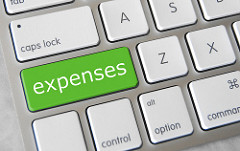 Day-day-accounting is one part of running your business. But, tracking assets in your business is also important, especially when it comes to tax time. Bernard Roesch is going to explain how to track business assets and depreciation within QuickBooks.
Day-day-accounting is one part of running your business. But, tracking assets in your business is also important, especially when it comes to tax time. Bernard Roesch is going to explain how to track business assets and depreciation within QuickBooks.
Why Tracking Assets And Depreciation Is Important
It’s important to track assets and depreciation in your accounting records for a number of reasons.
- First, it makes your reporting accurate for your business.
- For example, if you buy a large asset such as a piece of equipment, you should not log the expense as an expense in the month that you purchased it.
- Instead, that expense should be spread out over the lifetime of the asset.
- This process of spreading out expenses over time is called depreciation.
- Using depreciation is important so that your monthly profit and loss records are accurate.
- Tracking the entire purchase as an expense in the single month it was purchased would cause you to be extremely unprofitable that month, because the asset is used over a longer period of time.
- It’s also generally important to track what you own, such as the assets, the value of those assets, etc.
- While you don’t need to track every single item you purchase as an asset in your business, such as a small expense like kitchen utensils, it is important to track larger assets such as computers and other equipment.
- Tracking these assets enables you to have a true book value for your business since the business owns those assets.
- Lastly, it’s also very important to track assets and depreciation for taxes.
- As explained above, you should not expense the entire purchase of an asset when it’s acquired.
- Tax laws actually require you spread out expenses over time, depending on the specific type of asset being purchased.
- For tax records, you will need to list your assets, have records of when they were acquired, and report those depreciation schedules according to tax laws.
- Your CPA can help you log, track, and report these for taxes, but it’s important for you to have records of this.
- Having them logged directly within QuickBooks is best for your business reporting, as well as for taxes.
How To Log Assets And Depreciation In QuickBooks
There are a few steps to logging assets and depreciation in QuickBooks.
- Create an informal policy for assets – As mentioned above, you do not need to log every single purchase as an asset. We recommend using a threshold of $500 to $1,000 plus dollars as the level of purchase to warrant tracking the item as an asset.
- Record the asset in QuickBooks – When you purchase the item, rather than making the expense category something like office supplies, or another normal expense, log it as a fixed asset. This fixed asset appears on the balance and does not affect your profit and loss.
- Log depreciation of that asset over time – You can create a schedule based on the lifetime of that asset or tax requirements. And then, configure automatic transactions within QuickBooks to expense this asset over time.
Your CPA can help you determine the exact schedule to use, but the process in QuickBooks simply requires you to create recurring transactions to log the depreciation expense against the fixed asset.
Podcast: Play in new window | Download
Subscribe: RSS
